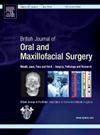来自荷兰头颈审计的口腔癌重建手术的全国临床实践差异:我们都在做同样的事情吗?
IF 1.7
4区 医学
Q3 DENTISTRY, ORAL SURGERY & MEDICINE
British Journal of Oral & Maxillofacial Surgery
Pub Date : 2025-04-01
DOI:10.1016/j.bjoms.2024.10.232
引用次数: 0
摘要
质量注册中心提供可以推动质量改进的真实数据,这通常从减少医院间差异开始。我们使用荷兰头颈审计(DHNA)研究了在全国范围内接受口腔癌(OCC)重建手术的患者的结果和医院间差异的程度。在dna范围内,我们选择了2018年至2022年间接受根治性重建手术的所有OCC患者。比较患者、肿瘤和治疗特点,包括重建策略(植皮、局部转位、带蒂皮瓣和自由皮瓣)。在接受游离皮瓣重建的患者中,根据Clavien-Dindo (CD)分类对术后并发症进行评分,并标记为轻微(CD 1-2)或严重(CD≥3)。共有1383名患者被纳入分析。特别是在I期肿瘤患者(10.1%)中,不同中心的重建手术差异很大,偏爱局部转位(42.6%)。游离皮瓣(n = 974)最常用于肿瘤负荷较大的患者(65.4-89.2%),前臂桡侧皮瓣是首选技术(54.7%,范围37.1-80.8%)。34%的游离皮瓣患者出现术后并发症,其中38例皮瓣全失(总并发症3.9%)。各中心的战略和百分比差异很大,表明医院间在应用技术和结果方面存在很大差异,需要改进国家数据。证据水平:II。本文章由计算机程序翻译,如有差异,请以英文原文为准。
Nationwide clinical practice variation for reconstructive surgery following oral cavity cancer from the Dutch Head and Neck Audit: are we all doing the same?
Quality registries provide real-world data that can drive quality improvement, which often starts with reducing inter-hospital variation. We explored outcomes and the extent of nationwide inter-hospital variation for patients undergoing reconstructive surgery after oral cavity cancer (OCC) using the Dutch Head and Neck Audit (DHNA). Within the DHNA, we selected all OCC patients who underwent curative reconstructive surgery between 2018 and 2022. Patient, tumour, and treatment characteristics were compared, including reconstruction strategies (skin grafting, local transposition, and pedicled and free flaps). Of those treated with free flap reconstruction, postoperative complications were scored according to the Clavien-Dindo (CD) classification and labelled minor (CD 1–2) or major (CD ≥3). A total of 1383 patients were included in the analysis. Especially in the case of patients with stage I tumours (10.1%) there was a wide variation in reconstructive surgery between centres, with a preference for local transposition (42.6%). Free flaps (n = 974) were used most often in patients with a more extensive tumour load (65.4–89.2%), with the radial forearm flap the preferred technique (54.7%, range range 37.1–80.8%). Thirty-four per cent of patients treated with a free flap had postoperative complications, with 38 cases of total flap loss (overall 3.9% complications). Strategies and percentages varied widely across centres, showing high inter-hospital variation in applied techniques and outcomes, and the need for national data improvement.
Level of evidence: II.
求助全文
通过发布文献求助,成功后即可免费获取论文全文。
去求助
来源期刊
CiteScore
3.60
自引率
16.70%
发文量
256
审稿时长
6 months
期刊介绍:
Journal of the British Association of Oral and Maxillofacial Surgeons:
• Leading articles on all aspects of surgery in the oro-facial and head and neck region
• One of the largest circulations of any international journal in this field
• Dedicated to enhancing surgical expertise.

 求助内容:
求助内容: 应助结果提醒方式:
应助结果提醒方式:


